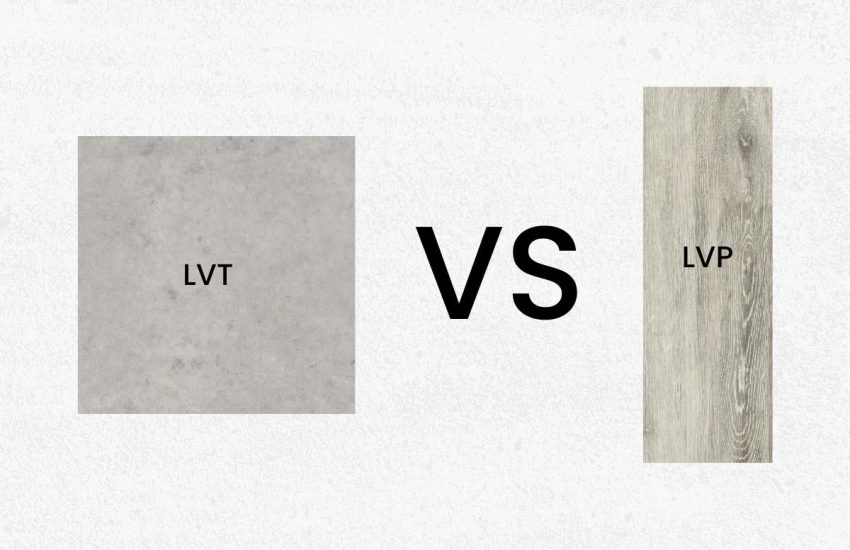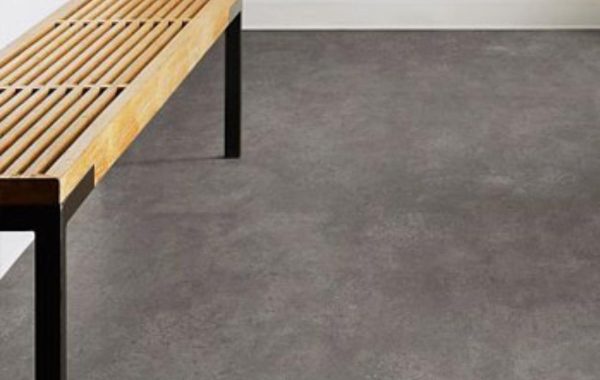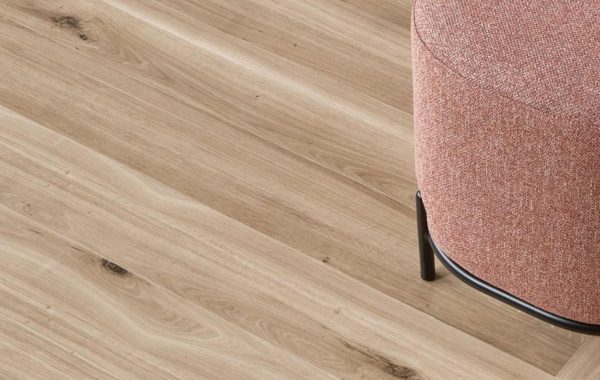Quick Answer: The main difference between LVT (Luxury Vinyl Tile) and LVP (Luxury Vinyl Plank) is their format. LVT is designed to mimic stone or ceramic tile, available in square shapes, while LVP resembles hardwood flooring with long plank shapes. Both offer durability, waterproofing, and are easy to install.
LVT vs LVP Flooring: The Basics
So you’re on a quest to find the perfect flooring for your space, and you’ve come across the terms LVT and LVP. But what exactly are these, and is there really a difference? Let’s clear up the confusion for you.
LVT (Luxury Vinyl Tile) and LVP (Luxury Vinyl Plank) are the same product, just in a different shape. These terms are often used interchangeably. For example, some retailers just use the term LVT and lump luxury vinyl plank into the same product category. Other retailers have a distinct separation between LVT from LVP. In this article we dive into the distinction:
LVT is your go-to for a chic, tile-like look that mimics high-end materials like stone, ceramic, or marble. It’s perfect for creating a sleek, sophisticated space without the high cost of real tile. Plus, if you’re looking to add some flair to your floors, bold, colorful LVT options are available to make your design truly stand out.
On the other hand, if you’re looking for cozy, wood-like options, LVP is just for you. It gives you the warmth and charm of real hardwood while being much more budget-friendly and durable.
Is There Really a Difference Between LVT and LVP?
The difference boils down to look and form.
LVT comes in square or rectangular tiles, making it ideal for kitchens and bathrooms where a stone or tile look is traditionally preferred. It’s especially great in spaces that need high moisture resistance.
LVP, as the name suggests, comes in long planks that resemble hardwood. It’s perfect for living rooms, bedrooms, or any area where you want the warmth and style of wood without the maintenance headaches. It’s also slightly thicker, offering a softer feel underfoot, which is always a plus in residential settings.
LVT vs LVP for Home Renovations
For the DIY enthusiast, LVP might be the way to go. Its click-and-lock installation method is simple enough for the most novice renovators, making it a popular choice for those quick weekend projects.
LVT, while also DIY-friendly, might take a bit more effort, especially if you’re looking to achieve complex tile patterns or use grout. But if you’re after a bathroom that looks like it’s a luxury spa, LVT might be worth the extra effort.
LVT vs LVP for Commercial Flooring
When it comes to commercial spaces, durability is king. Both LVT and LVP are robust, water-resistant options, but they shine in different areas.
LVP tends to be thicker and more resistant to scratches, making it ideal for high-traffic areas like retail stores or busy office spaces.
LVT, with its tighter seams, might offer better moisture resistance, making it perfect for spaces where spills are common. Plus, its stone-like appearance can elevate the look of any commercial space, adding a sophisticated edge to impress clients and customers alike.
In the end, the choice between LVT and LVP really depends on your specific needs—whether you’re prioritizing ease of installation, the look and feel of the space, or the durability required for high-traffic areas. Both options are versatile, cost-effective, and stylish, so you can’t go wrong with either!
For more in-depth advice on choosing the right flooring for your space, you might find it helpful to check out some independent reviews or dive into the latest design trends to see how these materials are being used in various settings. And it’s always a good idea to consult with a flooring professional at Koffler Sales to ensure you get the perfect match for your space.
Happy flooring!
Can you install LVT and LVP over existing flooring?
Yes, LVT and LVP can be installed over most existing flooring, provided the surface is smooth, clean, and in good condition. Any significant imperfections or damage in the old floor should be addressed before installation to ensure a seamless finish. If your existing subfloor is concrete, be sure to check for any signs of concrete moisture damage before installation — moisture issues can compromise the adhesive bond and the lifespan of your vinyl flooring.
What are common designs for LVT and LVP?
LVT commonly features designs that mimic stone, ceramic, and marble, while LVP typically replicates the look of hardwood. Both offer a wide range of styles, including colorful LVT patterns and various wood-like finishes, to suit different aesthetics.
Is LVP a good option for commercial and high-traffic environments?
Yes, LVP is an excellent choice for commercial and high-traffic environments due to its durability, resistance to scratches and dents, and ease of maintenance. Its ability to withstand heavy foot traffic makes it a practical option for busy spaces.


